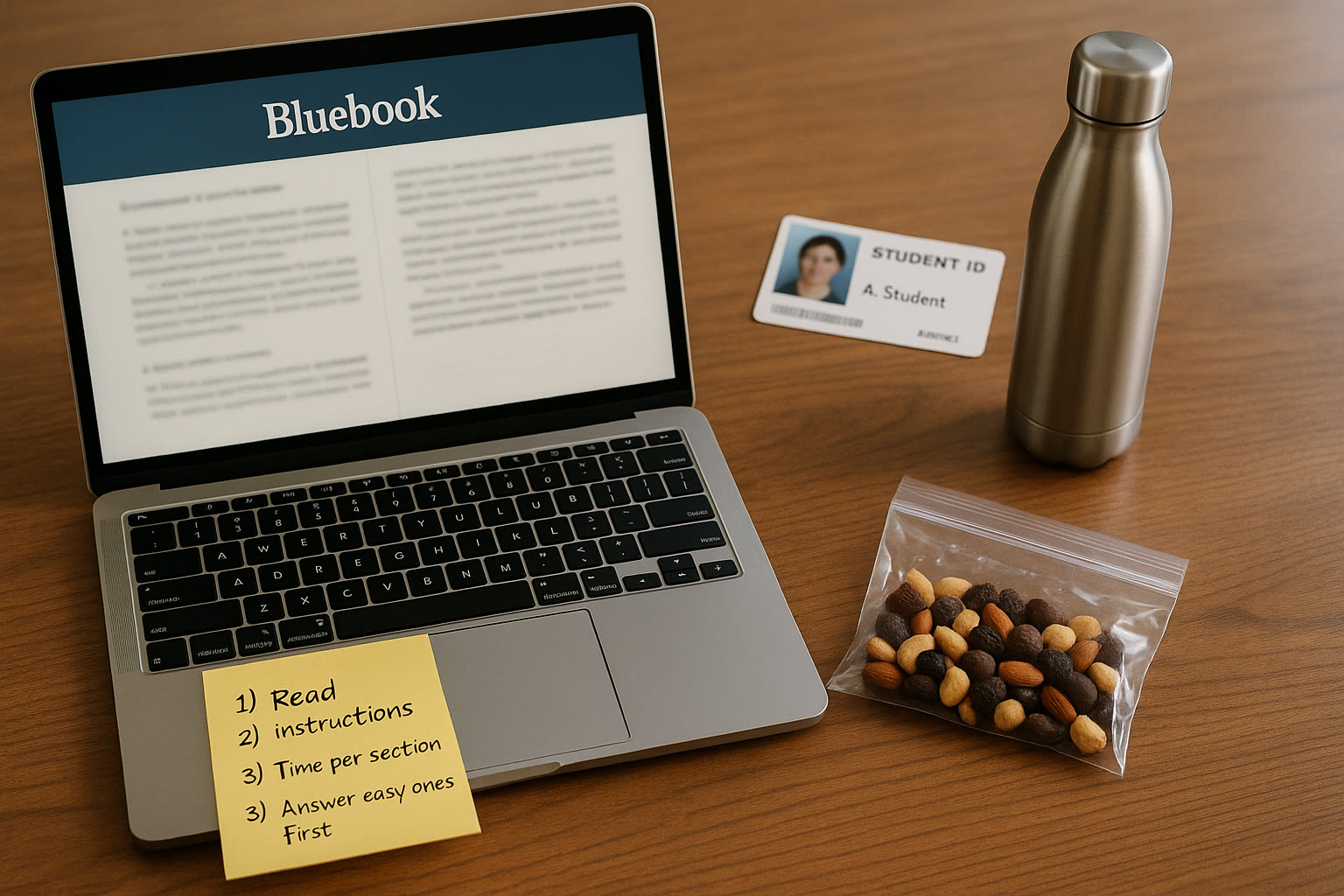Why This Matters: Beyond Scores
Watching a teen struggle with test‑taking can feel like watching someone you love walk into a storm. It’s hard, and it’s emotional, but it’s also an opportunity: to teach resilience, build practical skills, and help your child see that a single test never defines them. The Digital SAT and its related assessments are part of the college application landscape, but the journey there is as much about mindset and support systems as it is about content mastery.

Understanding the Challenge: Why Some Teens Freeze
Not every student who struggles with tests is unprepared. Many are caught off guard by anxiety, timing pressures, unfamiliar formats, or by past negative experiences. Here are common reasons teens freeze or underperform:
- Performance anxiety — physical symptoms like a racing heart, blanking, or stomach pain.
- Poor test strategies — not knowing how to pace, guess intelligently, or navigate digital question types.
- Skill gaps masked by confidence in some areas but weak in others.
- Perfectionism — fear of making mistakes can lead to paralysis.
- Environmental factors — lack of sleep, poor nutrition, or chaotic study spaces.
Real‑World Example
Consider Maya, who knew algebra well but would blank on the math section when the clock ticked. Practicing problems alone didn’t help; learning timing strategies and working with a tutor to simulate test conditions did. Within a few months she began to complete sections and the physiological symptoms — tight chest, shaky hands — subsided because she felt prepared for the situation, not just the content.
Start With Empathy: Conversations That Help
The way you talk about tests matters more than you think. Put pressure into perspective and open the door for honest conversation.
- Listen first. Let your teen describe what’s hard without interruption.
- Normalize anxiety. Acknowledge that nerves are common and treatable.
- Avoid labels. Don’t call them “bad test‑takers” — focus on skills and strategies instead.
- Reframe the narrative. Emphasize growth: “This is something we can work on together.”
Conversation Starters
Try questions like:
- “What part of the test makes you most nervous?”
- “When did you last feel confident on a timed assignment? What was different?”
- “If one thing could change before test day, what would it be?”
Practical Strategies: Build a Test‑Ready Routine
Routines reduce unpredictability — and predictability calms anxiety. A test‑ready routine has study structure, healthy habits, and rehearsal of test conditions.
Weekly Study Framework
Consistency beats last‑minute intensity. Aim for steady progress instead of marathon cram sessions.
- Short, focused sessions (30–50 minutes) with 10–15 minute breaks.
- Mix content review with active practice: one day vocabulary/reading strategies, next day math concepts and problem sets.
- Weekly full-length adaptive digital practice on the official platform to build stamina and familiarity with the interface.
Daily Habits That Help
- Sleep: prioritize consistent bed and wake times. Sleep is non‑negotiable for memory and focus.
- Nutrition: breakfast with protein and complex carbs improves concentration.
- Movement: short workouts or walks before study clear the mind and lower stress hormones.
- Mindfulness: even five minutes of breathing or a quick grounding exercise before a practice test helps reduce catastrophizing thoughts.
Skill Building: Smart, Targeted Preparation
Preparation matters — but it must be intentional. A scattershot approach creates busywork without measurable gains. The most effective plans focus on diagnostic work, targeted practice, and spaced review.
Start with Diagnosis
Run a practice test under realistic conditions and review the results together. Identify 3–4 target areas: types of reading questions, algebraic manipulation, timing, or digital navigation skills (like flagging and moving between sections). A clear diagnosis prevents spinning wheels.
Targeted Practice Techniques
- Deliberate practice: isolate a skill, practice it with feedback, and repeat with increasing difficulty.
- Chunking: break complex passages or multi‑step problems into manageable parts.
- Error logs: keep a simple log of mistake types rather than just missed questions.
- Simulate the test environment digitally to get comfortable with the adaptive format and tools such as the built‑in calculator and highlighting.
Tools & Supports: When to Bring in Extra Help
Sometimes a teen needs more than pep talks and practice. Professional support — whether a tutor, counselor, or test‑skills coach — can accelerate progress. If your teen has persistent physical anxiety symptoms, consider consulting a licensed counselor or school psychologist in addition to academic help.
What Good Tutoring Looks Like
- Personalized plans that start from a diagnostic: not all students need the same content focus.
- 1‑on‑1 guidance to practice timing, question strategies, and resilience techniques under pressure.
- Regular progress checks with data and clear next steps.
For families exploring tutoring, Sparkl’s personalized tutoring can fit naturally into this approach — offering 1‑on‑1 guidance, tailored study plans, expert tutors, and AI‑driven insights that track progress and adapt instruction. When blended with home routines, targeted practice, and school supports, this kind of personalized coaching helps teens transform anxiety into confidence.
Test Day: Rituals That Reduce Panic
Test day is mostly logistics and mindset. Rehearse the day until it feels ordinary.
Practical Checklist (48–24 Hours Before)
| Item | Why It Helps |
|---|---|
| Confirm device and Bluebook app installation | Eliminates technical surprises for the Digital SAT |
| Pack snacks, water, ID, and allowed materials | Reduces stress from last‑minute scrambling |
| Review a short checklist of strategies (time management, guess rules) | Reinforces habit cues and reduces decision fatigue |
| Sleep and light review only | Prevents cognitive overload and supports memory consolidation |
Morning of the Test
- Eat a balanced breakfast; avoid heavy, sugary foods that crash energy.
- Use a two‑minute breathing or grounding exercise before entering the test room.
- Remind your teen: small setbacks (a missed question) do not derail the whole test.

Handling Setbacks: If the Test Goes Poorly
A disappointing score is not a failure — it’s data. Treat it the same way a mechanic treats a check engine light: identify the problem, make a plan, then act.
Steps After a Low Score
- Take time to process emotions before analyzing the results.
- Look at the score report to identify the weakest areas. Focus your next phase of study there.
- Adjust the study plan: more targeted practice, timed sections, and perhaps a different tutor approach.
- Plan the next test date with realistic milestones and buffer time for improvement.
Strategies for Specific Test‑Taking Challenges
Blanking Out or Freezing
- Practice quick grounding tools: five deep breaths, name five objects in the room, and begin with an easier question to gain momentum.
- Teach “micro‑wins” — pick one question to answer correctly in the first five minutes to build confidence.
Timing Problems
- Use time checkpoints: after X minutes, you should be at question Y. Practice this with full digital sections.
- Learn strategic skipping: move on from long traps and return if time allows.
Negative Self‑Talk and Perfectionism
- Help your teen reframe mistakes as learning opportunities: “That was one data point, not the whole story.”
- Use role modeling: share a time you faced a setback and what you learned.
Working with Schools and Accommodations
If anxiety or attention needs meet clinical thresholds, pause and evaluate accommodations. Extended time, separate testing rooms, or other supports can level the playing field. Start conversations early: speak with school counselors, read the College Board’s accommodation policies, and gather documentation if needed.
How Parents Can Advocate
- Request a meeting with the school counselor to discuss observed symptoms and academic impact.
- Gather documentation from teachers or healthcare providers where appropriate.
- Understand the process and timelines for requesting testing accommodations.
Measuring Progress: What to Track
Progress is more than a single number. Combine quantitative and qualitative measures.
- Practice test scores and section breakdowns.
- Speed and accuracy metrics (e.g., percentage correct on timed sets of algebra problems).
- Emotional indicators: frequency/intensity of test anxiety episodes, sleep quality, and morning focus.
- Behavioral markers: ability to complete a practice section without meltdown or avoidance.
How Families Can Support Without Hovering
The art of support balances presence with autonomy. Teens gain the most when they feel supported but still own the work.
- Be consistent: stick to gentle routines and check‑ins instead of micromanaging progress.
- Celebrate small wins — finishing a timed section or using a new strategy counts.
- Let them lead planning decisions so responsibility and confidence grow.
- Keep perspective: college admissions are holistic. Activities, essays, recommendations, and fit matter too.
When Personalized Tutoring Fits Best
Some students benefit hugely from a tailored partnership: focused instruction that adapts to their pace and psychology. Personalized tutoring can be especially helpful when a teen needs to build both skills and test resilience.
Sparkl’s personalized tutoring is an example of how this can work in practice — providing expert tutors who create tailored study plans, simulate test conditions, and use AI insights to pinpoint weaknesses. For a teen who freezes under pressure, a tutor can role‑play test scenarios, teach calming routines, and give the direct, compassionate feedback that builds momentum.
Planning the Long Game: Timeline for Improvement
Improvement takes time, but a realistic timeline gives hope and structure. Here’s a sample 3‑month roadmap for a student starting with moderate test anxiety and basic content knowledge.
| Month | Primary Focus | Action Items |
|---|---|---|
| Month 1 | Diagnosis & foundational skills | Take adaptive digital diagnostic test; build error log; begin 3 sessions/week of focused practice; introduce short daily mindfulness. |
| Month 2 | Targeted skill work & pacing | Work on weakest topics, timed section practice biweekly, introduce full-length digital practice every other week, track progress metrics. |
| Month 3 | Simulation & stamina | Weekly full-length Digital SAT simulations; focus on test‑day routines; finalize checklist and accommodations if needed; taper study in final week before scheduled test. |
Final Thoughts: Courage, Craft, and Community
Helping a teen who struggles with test‑taking is a blend of practical craft and emotional courage. It’s about teaching concrete skills — pacing, targeted practice, digital familiarity — and cultivating psychological tools — resilience, self‑compassion, and perspective. Small, consistent steps matter. So does the message you send: you are not alone; we will figure this out together.
If your family decides to bring in professional support, look for services that combine diagnostic clarity, empathetic coaching, and measurable progress. Personalized 1‑on‑1 tutoring — the kind that creates tailored study plans and practices test conditions — often shifts both competence and confidence faster than working alone. Sparkl’s 1‑on‑1 approach, with expert tutors and AI‑driven insights, is one example of how personalized support can be integrated naturally with school resources and home routines.
A Final Checklist for Parents
- Start with empathy — listen before advising.
- Run a diagnostic practice test and make a targeted plan.
- Build a predictable study routine with healthy habits.
- Simulate digital test conditions regularly.
- Consider personalized tutoring when progress stalls or anxiety interferes.
- Track both scores and emotional improvement.
- Celebrate the process. Every small win builds long‑term confidence.
Tests are hard, but they are teachable. With the right mix of compassion, structure, and targeted practice, your teen can move from dread to preparedness — and from “I can’t” to “I can try.” The goal isn’t perfection; it’s preparation, growth, and the knowledge that you have their back at every step.
















No Comments
Leave a comment Cancel